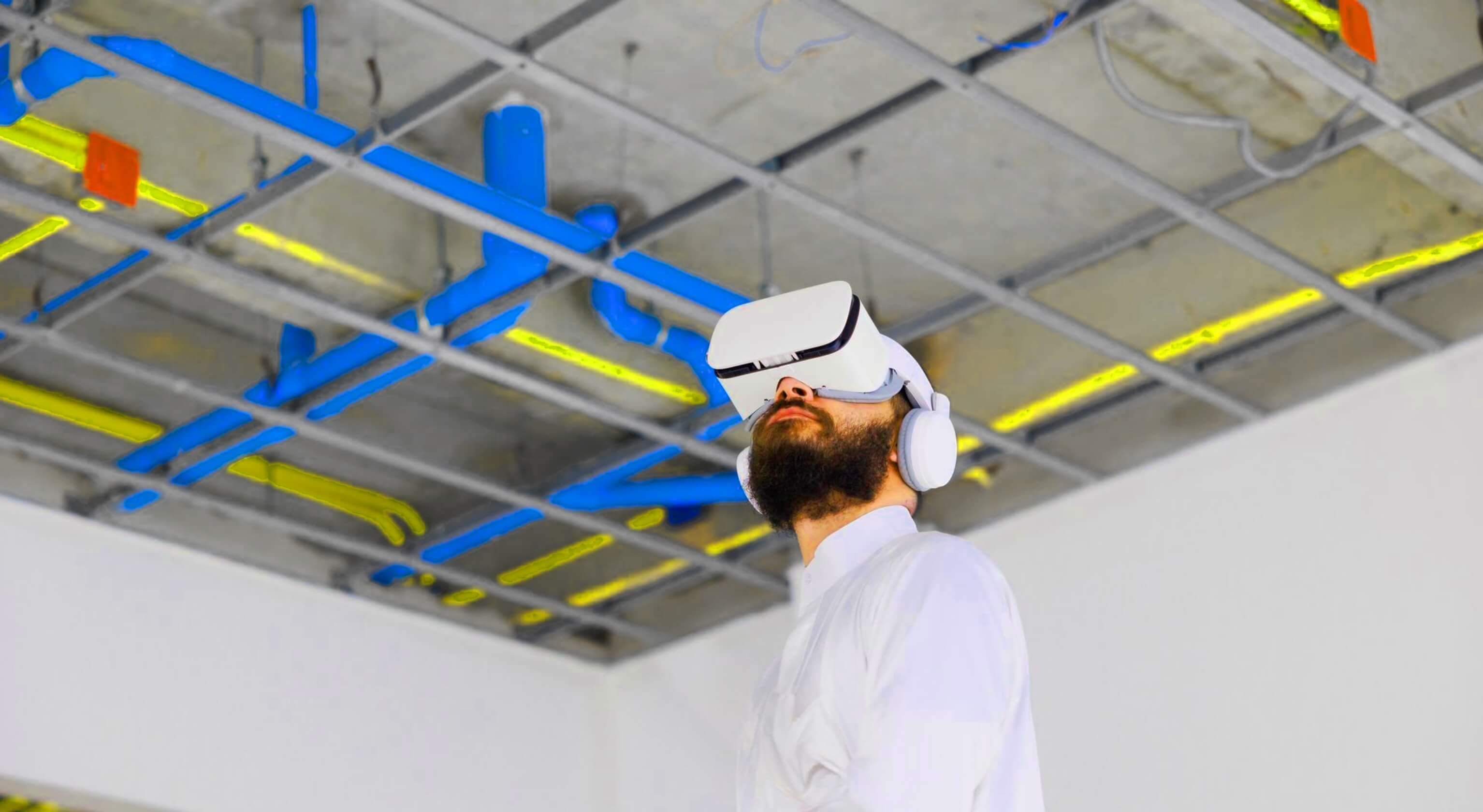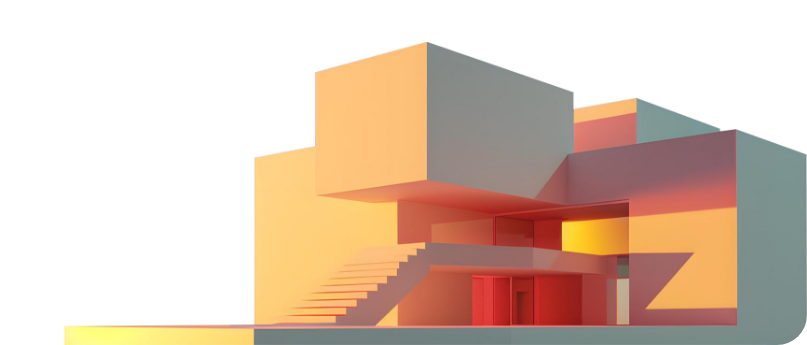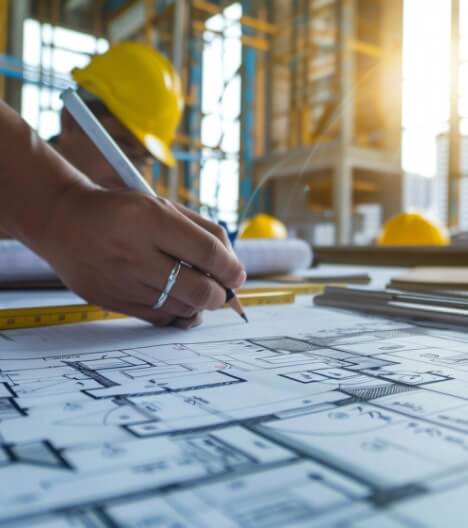 Mahipal Jadeja
Mahipal JadejaSmart Solutions with AI and VR in BIM Projects
 Mahipal Jadeja
Mahipal Jadeja
Send Us Your Requirement
The architecture, construction, and engineering sectors have grown over the years, and evidence of that is the adoption of new innovation and technology. As compared to traditional practices, AEC has opted to streamline and ease complex processes with new approaches. Efficiency, precision, and seamless workflow are paramount for any successful construction project. Without accuracy in all construction stages, professionals cannot expect to build as per the plan or with efficient building characteristics. Therefore, as time flew by rapidly, the AEC landscape was introduced with various techs and advancements, which have altered the reality of architecture and construction. In the 21st century, BIM needs no introduction in the construction horizon, along with another significant advancement that enhances the process and brings efficient outcomes. As a matter of fact, the construction sector quickly adopts new innovations that can benefit the sector in multiple ways. It is evident how rapid growth helps make complex tasks easier, seamless, and precise.
Building information modeling services is a great revolution that has allowed AEC professionals to assure quality, accuracy, and efficiency in multiple ways and promoted collaboration, cost-saving, and efficiency. With many benefits and improvements in the scope of work for construction, other technologies and innovations have resulted in better outcomes. A blend of AI and VR (virtual reality) technologies in the architecture and construction industry is indeed one of the big advancement. This innovation and adoption has led the industry to visionary AEC outcomes. The groundbreaking inventions allow professionals to enhance the visualization in real-time, build the most accurate digital models, collaborate with data integration, and create another streamlined workflow.
Implementation of AI in the architecture and construction industry goes beyond that efficient solution. AI allows professionals to save time and detect clashes and potential errors in digital BIM models, resulting in a streamlined workflow. On the other hand, the introduction of virtual reality in BIM services upscales the visualization scope and allows professionals, clients, and stakeholders to witness the infrastructure before it’s actually built. The combination of these two technologies boosts the precision of the architecture project, prevents costly delays, and enhances efficiency. Let’s look at both technologies and witness how they enhance the BIM workflow for AEC professionals.
Effortlessly Integrated AI and VR in BIM Workflow with Our Expertise
Call Today
Understanding Virtual Reality in BIM Construction
Since BIM modeling services in the AEC have boomed with its long list of benefits and easy workflow, the introduction of BIM is a revolutionary technology allowing BIM experts to curate digital models, collaborate, and communicate for the project. Having BIM as a tool has become indispensable for professionals in this era. Modern architecture demands a curve of creativity, which BIM technology enables. As advancement is continuous and changes with time, the introduction to virtual reality technology has pushed the AEC sector to a bigger picture. For the first steps, let’s understand what virtual reality is. It is an advanced technology that brings high-end experience in a computer-generated environment. Users or viewers can experience the realistic version of the place without actually being there.
Use of VR tech allows users and viewers to move through the space and understand how the space is utilized. Speaking in terms of the architecture and construction world, BIM and VR integration enhances the viewing experience of AEC professionals, stakeholders, and clients. BIM has a technology that offers a 3D view of the infrastructure, including its functionality, traits, and characteristics that allow architects, engineers, and designers to work accurately. The BIM model offers data-rich intelligent models that simulate the entire construction process, improve communication and collaboration, and enhance time and cost estimation.
Integration of VR in high-end technology results in much more efficiency and accuracy, allows professionals to view the infrastructure, detect clashes, promotes quick decision-making, and keeps every professional updated and informed. Integrating VR into BIM workflow enables high-experience visualization and improves collaboration among AEC professionals. Other than that, virtual reality in BIM brings key features to the construction workflow; the following are,
- Improved visualizations for interior, architectural, structural, and MEP
- Quality experience walkthrough of BIM curated environment
- Real-time interactions and updates in the digital model
Combining these two technologies enhances the architecture and construction workflow that revolutionized the entire landscape of AEC and enhanced how to execute design, communicate, and collaborate on a single project. Other than that, BIM technology ensures that each stage of the process is efficient, from design to project execution. As a matter of fact, it slo enhances components with the right implementation, such as structural BIM services, MEPF BIM services, architectural BIM, and much more. All these components or stages of any construction project become more efficient in terms of accuracy and visualization, allowing experts to eliminate the scope of any potential errors or clashes. Let’s look deeper into the significant benefits of BIM modeling services coordinated with VR technology.
Benefits of BIM Modeling Services with VR Technology
Appealing design visualization
Improve client collaboration
Seamless construction workflow
Communication in project
Cost-effective and time-efficient
- Appealing design visualization: It is one of the most significant advantages of using virtual reality in the construction realm. Visualizing the entire infrastructure was impossible in earlier days. Although with growing technology, VR with BIM enables architects and engineers to visualize the design in an appealing environment. Moreover, clients and stakeholders can easily move through the building environment, witnessing the aesthetics and functionality of the structure before it’s actually built. Further it enables in reducing the chances of rework as AEC experts can work according to the client’s vision.
- Seamless construction workflow: Integrating VR technology in BIM workflow allows experts to quickly identify potential clashes and errors. Typically, clashes are higher in MEPF BIM services; however, they are resolved without any costly rework. Although VR enhances visualization, errors, challenges, and clashes are promptly detected. This approach results in better feedback, client satisfaction, and quick error resolutions.
- Improve client collaboration: Working on clients’ ideas and collaborating with them is an evident process for AEC professionals. It is difficult for clients to understand technical aspects such as blueprints, digital models, and more. Providing clients with VR technology enhances collaboration, quick fixes on rework, better engagement, timely project completion, client satisfaction, and a transparent work approach.
- Communication in project: Another significant advantage of VR integration in BIM is easy and seamless communication. It allows for nurturing collaborative methods for designs so that professionals can work and interact on the same model as it is updated. Additionally, this facilitates the elimination of rework or any room for mistakes, as the project’s AEC team can efficiently execute the project without any miscommunication.
- Cost-effective and time-efficient: Project budget and tight schedule are the primary challenges in any construction project. Smart BIM technology integrated with virtual reality can significantly manage the project’s cost, remain strictly within budget constraints, and ensure that each project stage is completed in a timely manner.
These are some of the benefits of VR that can be availed in BIM technology. As the list of benefits can go long, this highlights the importance and how easy BIM workflow can help achieve the desired project goal within the timeline. Additionally, use of VR also enhances interior visualization services, ensuring the interiors of the infrastructure are presented appealingly and attractively. VR in the AEC industry is new and has slowly and gradually been adopted by many BIM service providers, architecture firms, and other third-party companies. Integrating artificial intelligence in architecture and the construction landscape is another push toward creativity, easy management, and innovative solutions. Explore how AI-powered BIM solutions play a key role in today’s modern architecture.
Integrating AI Technology in BIM Construction Workflow
The architecture, engineering, and construction industry is in the continuous evolution of expansion and growth. So does the technology that plays a major role in today’s modern world. Since technology is continuously growing and expanding innovatively, AEC realms leverage the power of new approaches to bring more efficient and accurate outcomes. Construction and architecture landscapes have enormous projects that demand sufficient efficiency, accuracy, and reliability. AI in the economy is spreading like wildfire in most industries. The AEC sector quickly adopted AI technology in construction workflow, considering its benefits and the market demand.
BIM is the most revolutionary approach in the complex construction landscape, allowing work on 3D models. 3D BIM modeling represented much better and richer insights, visualization, and other sets of extended benefits that eased the complex process and resulted in better outcomes. However, as AI came to commencement, the construction industry has revamped the BIM approach as smart BIM technology. It was gradually becoming a demand of the market. Integration of artificial intelligence is the future of BIM technology. As AI advances, so does the BIM approach, which offers innovative and prominent solutions to challenges still faced in the industry. Let’s take it, for example, to better understand.
Example: A client from an architecture firm shares a CAD file and requires architectural BIM services for the project. Here, the CAD file is converted into BIM via CAD to BIM services, allowing experts to input the CAD details and proceed accordingly to offer the most accurate outcomes. The conversion process entails specific challenges and difficulties that AI technology can now resolve. Therefore, AI helps overcome specific challenges and save time in such scenarios.
Using AI in BIM has the power to overcome some of the limitations that are faced in some stages. Such as making the 3D BIM model more accurate with data and enabling AEC experts to optimize their layout, plans, and design according to the schedules. As a matter of fact, AI algorithms learn from previous projects and suggest areas of improvement in the design or layout to make it more efficient. Other than that, AI in BIM workflow brings a multitude of advantages, as follows;
Advantages of AI in BIM Workflow
Better efficiency and accuracy
Communication and collaboration
Sustainable design improvement
Risk management
Quick clash resolution
- Better efficiency and accuracy: Since any project success is dependent upon the level of efficiency and accuracy, AI BIM solutions offer experts the opportunity to optimize their designs, layouts, and models. This promotes efficiency of the design and project, saves cost, is less time-consuming, improves resource planning, and more.
- Sustainable design improvement: Sustainability is one of the prime factors in modern architecture, considering the current environmental issues. AI helps to facilitate sustainable design improvement with BIM integrated. It drives a sustainable future without any errors, clashes, or mistakes within the project timeline.
- Communication and collaboration: BIM, as a technological approach in AEC, has already improved communication and cooperation between AEC professionals and clients. Transparency in the workflow improves outcomes more efficiently and accurately. However, AI integration offers real-time updates, insights, rich information, and feedback, resulting in enhanced outcomes.
- Risk management: AI-powered BIM solutions offer quick and efficient risk management in the digital model. This ensures no mishaps or slight error marks for on-ground mistakes that can be serious for workers or for the project.
- Quick clash resolution: BIM tools resolve clashes in different construction stages. However, using AI in the construction process allows for proactive solutions, saving the BIM team time, cost, and effort.
BIM is a groundbreaking approach for the AEC landscape. Integrated with AI technology, it becomes more powerful and results more efficiently.
Final Note
Technology is a significant, evident and powerful approach to delivering efficient architecture projects. AI and VR tools enhance and highlight the future of BIM along with AEC landscape growth in the market. Utilizing these tools efficiently in the project brings the highest quality outcomes, less time consuming, and easiness in catering complex solutions.






